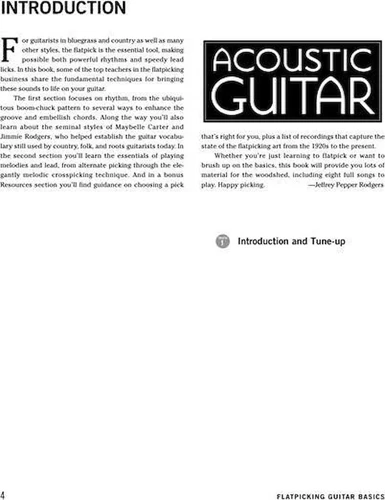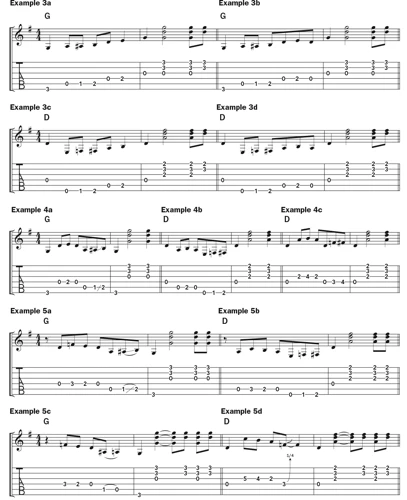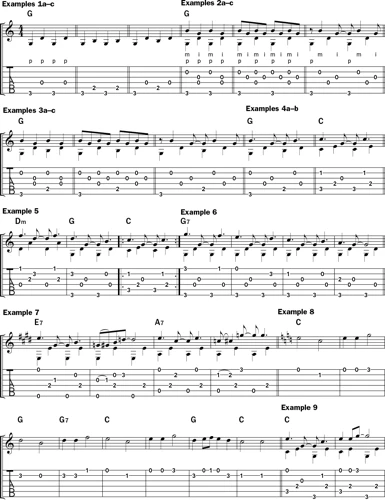Flatpicking is a popular technique for playing guitar, especially in country music. It involves using a flat pick to strike individual strings in a rapid, rhythmic pattern. In this blog post, we’ll explore some common flatpicking patterns used in country songs and how you can incorporate them into your own playing.
The Basics of Flatpicking
Before we dive into specific patterns, it’s important to understand the basics of flatpicking. Here are a few key things to keep in mind:
- Use a stiff, lightweight pick: A pick with a stiff, plastic material and a light weight will allow you to strike the strings with precision and speed.
- Hold the pick correctly: Hold the pick between your thumb and index finger, with the point of the pick extending just beyond your fingertip. This will give you maximum control and accuracy.
- Practice your alternating stroke: Alternating downstrokes and upstrokes is the foundation of flatpicking. Practice alternating between the two strokes, focusing on maintaining a consistent rhythm and even volume.
Common Flatpicking Patterns in Country Music
Now that you have the basics down, let’s take a look at some common flatpicking patterns used in country music.
The Boom-Chick Pattern
The boom-chick pattern is a basic, foundational pattern used in many country songs. It consists of a steady bass note (the “boom”) followed by a rapid, syncopated strum (the “chick”). Here’s how it looks in tablature:
E|-----------------|-----------------|-----------------|-----------------| B|-----------------|-----------------|-----------------|-----------------| G|-----------------|-----------------|-----------------|-----------------| D|-----------------|-----------------|-----------------|-----------------| A|-----0----3----0-|-----0----3----0-|-----0----3----0-|-----0----3----0-| E|-3----3----0----|-3----3----0----|-3----3----0----|-3----3----0----|
The Forward-Roll Pattern
The forward-roll pattern is a more advanced pattern that involves rolling the pick forward across the strings, creating a cascading effect. Here’s how it looks in tablature:
E|-----------------|-----------------|-----------------|-----------------| B|-----------------|-----------------|-----------------|-----------------| G|-----------------|-----------------|-----------------|-----------------| D|-----------------|-----------------|-----------------|-----------------| A|-----0----3----0-|-----0----3----0-|-----0----3----0-|-----0----3----0-| E|-3----3----0----|-0----0----0----|-0----0----3----|-0----0----3----|
The Crosspicking Pattern
Crosspicking is a technique that involves crossing strings with the pick, creating a fluid, flowing sound. Here’s how it looks in tablature:
E|-----------------|-----------------|-----------------|-----------------| B|-----------------|-----------------|-----------------|-----------------| G|-----------------|-----------------|-----------------|-----------------| D|-----------------|-----------------|-----------------|-----------------| A|-----0----3----0-|-----0----3----0-|-----0----3----0-|-----0----3----0-| E|-0----3----0----|-3----0----3----|-0----3----0----|-0----3----0----|
Incorporating Flatpicking Patterns into Your Playing
Now that you have an understanding of some common flatpicking patterns, it’s time to start incorporating them into your playing. Here are a few tips to get you started:
- Start slow: It’s important to start slow and gradually increase your speed as you become more comfortable with the pattern. This will help you maintain accuracy and control.
- Practice with a metronome: Using a metronome will help you maintain a consistent tempo and improve your timing.
- Experiment with different rhythms: Once you have a solid grasp of a particular pattern, try experimenting with different rhythms and variations. This will help you develop your own unique style and sound.
Looking to explore different guitar techniques in country music? Check out our articles on strumming patterns, fingerpicking styles, fingerpicking techniques, learning flatpicking, and famous flatpicking songs to enhance your skills and knowledge in the world of country music!
Conclusion
Flatpicking is a versatile and rewarding technique that can add a new dimension to your country guitar playing. By mastering the basics and practicing common flatpicking patterns, you can develop your skills and take your playing to the next level. So grab your guitar, grab a pick, and start flatpicking!




